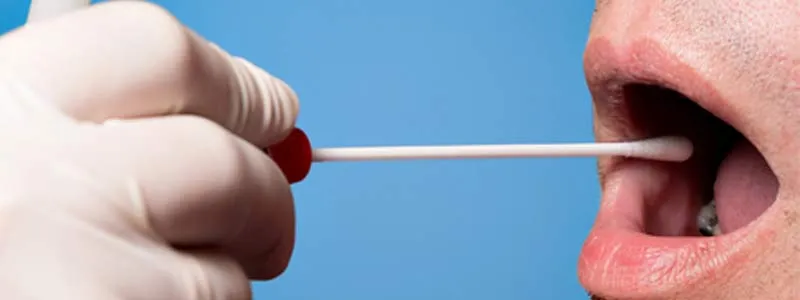Guadalajara, Jalisco.February 15, 2017 (Conacyt Information Agency) .- A team of specialists from the Jalisco Status and Design Technology and Design Center, in order to improve the quality of life of this sector of the population.
In an interview for the Conacyt informative agency, Dr. Mario Alberto Flores Valdez, director of the Ciatej Medical and Pharmaceutical Biotechnology Area, said the investigations aim to find the presence of this disease before it develops.
"If we manage to specify biomarkers for early diagnosis, the treatment scheme hopes that it will be more successful and obviously less subject to complications, thus improving the quality of life of the patients," he said, while adding that nearThe third part of those who live with diabetes in Mexico are at risk of contracting tuberculosis.
The project, initiated in August 2016, is carried out with more than 4.6 million pesos by the International Fund for Scientific and Technological Cooperation (FONCYT).
tuberculosis and diabetes in Mexico
Diabetes afflicts more than four million Mexicans and is considered the first cause of death among women and the second among men nationwide, according to the National Institute of Public Health (INSP).In accordance with the Mexican Diabetes Federation A.C., this disease represents an expense of three thousand 430 million dollars a year in its attention and complications.
Meanwhile, data from the World Health Organization (WHO) report that at least one third of the world's population lives with tuberculosis in a state of latency.In Mexico, around 15 thousand new cases are detected every year and two thousand deaths from this disease, according to the Ministry of Health (SSA).
Although health protocols contemplate a vaccine against tuberculosis applied in childhood, the prolonged time to detect the disease - at least six and up to 12 weeks - has limited the control of tuberculosis in the country.For a person suffering from diabetes mellitus, the risk of tuberculosis increases by 300 percent, according to Dr. Flores Valdez.
Alcoholism, HIV/AIDS and malnutrition are other conditions that magnify the probability of developing tuberculosis, since the immune system of the body is compromised.In the case of the coexistence of diabetes and tuberculosis, the patient may present new symptoms derived from the usual treatment against tuberculosis, such as renal and liver damage.For example, some drugs used to relieve tuberculosis cause an elevation of blood glucose, so diabetes is aggravated.
“One disease complicates the other.A diabetic person who has tuberculosis is more difficult to treat because it does not respond equal to antibiotics.Diabetic defenses are very different, so the infection usually becomes more severe, ”said the head of the project.
a new format, the goal
The objective of the team, completed by researchers from the University of Monterrey and the University of Arizona, in the United States, is to create a diagnostic method with greater sensitivity and specificity of the bacillus causing the disease, the Mycobacterium tuberculosis.
Early diagnosis will allow to give a soon and probably less prolonged treatment, to take into account the symptoms of both conditions.Likewise, having this diagnosis could mean savings for the health system by having greater efficiency and lower extension in the treatment of tuberculosis in people with diabetes.
Dr. Jorge Bravo Madrigal,Researcher attached to the area of medical and pharmaceutical biotechnology of the CIATEJ, said that although the format of this test is not yet defined, this could be similar to a pregnancy test, an Elisa or a western blot.
“(The format) will depend on how many markers are able to identify as useful.The lateral flow tests - like those of pregnancy - in which the sample is allowed through a strip and lines appear that reveal the result could be the most suitable, ”said the researcher.
He also noted that the sensitivity and specificity of the test will be privileged.Another factor to consider will be its practicality and marketing capacity, so that the test can be used in small offices or laboratories.
The Elisa technique - in immunoabsorption linked to enzymes - is mostly used for HIV diagnosis and consists of the detection of antigens or antibodies characteristic of a certain pathology.The Western Blot test, meanwhile, is an analytical technique to identify previously immobilized specific protein in a membrane.
“We hope, to succeed with this project, to be able to achieve a diagnosis in hours.It's about placing the sample and having a reaction, they can be minutes.It is a considerable decrease over time, ”said the researcher.
the current method
"Current tests are divided into complexity, some are quite expensive and tardas," said Dr. Bravo Madrigal.One of these is the Purified Protein Derivative Cutaneous Test (PPD);Another is through expectoration and a crop, which takes four to eight weeks.If positive, a new test is performed to confirm the presence of the bacillus, so the waiting time is doubled.
“And if we still want to know if the bacteria is pharmacor resistant, it will take another two weeks to find out with the methods available in the reference hospitals.In total, it is approximately three months, but the treatment begins since tuberculosis is confirmed, ”said Dr. Mario Alberto Flores Valdez.
The treatment time goes from six months and can last several years, but it is curable.However, in children and people with a weakened immune system, it can reduce the quality and expectation of life.
“Today, tuberculosis is not sought if you do not have symptoms: weight loss, fever sweating, etc.Until then, evidence is sought that there is infection, ”shared Dr. Flores Valdez, level I member of the National System of Researchers (SNI).


